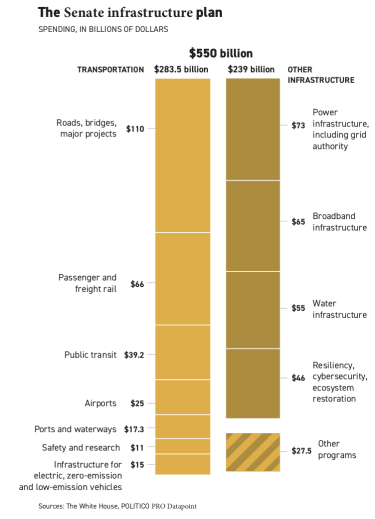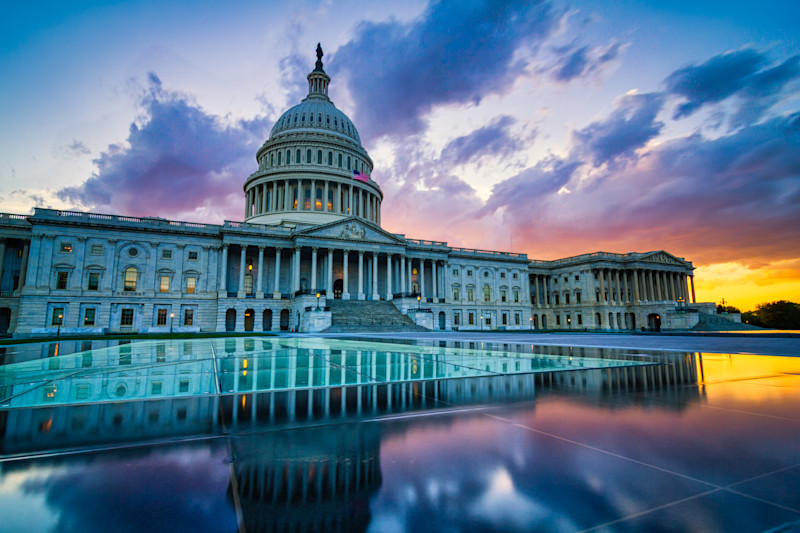In a crescendo of activity before the August recess, the Senate came together in a rare show of bipartisanship to pass a roughly $1 trillion infrastructure package after weeks of intense negotiations. Of the Republicans, 19 joined all 50 Democrats on this significant investment in the nation’s public works. AMT joined other manufacturing organizations in calling on the Senate to support the measure.
The bill represents $550 billion in new federal funding, including $110 billion for roads and bridges, $73 billion to rebuild the electric grid, $66 billion in passenger and freight rail, $65 billion to expand broadband Internet access, $55 billion for water infrastructure, $39 billion to modernize public transit like buses, and $7.5 billion to create the first federal network of charging stations for electric vehicles. Action now moves to the House, where the leadership has tied its passage to approval of the budget reconciliation bill not yet written.
Senate Democrats passed the $3.5 trillion budget framework with no Republican support just days after the infrastructure vote. It contains no legislative language but outlines funding for other Biden administration priorities, including investments in public health, education, environment, and climate change. It will almost certainly contain tax increases on businesses
September is always a jam-packed month on Capitol Hill, but there’s a sense of urgency as the clock ticks toward the 2022 elections. The House cut short its recess and will return to work on Aug. 23rd to resolve the budget. A lot of work remains to do for both bills to reach President Joe Biden’s desk, and there’s no easy path forward as Democrats grapple with differences in their caucus over taxes and spending.







